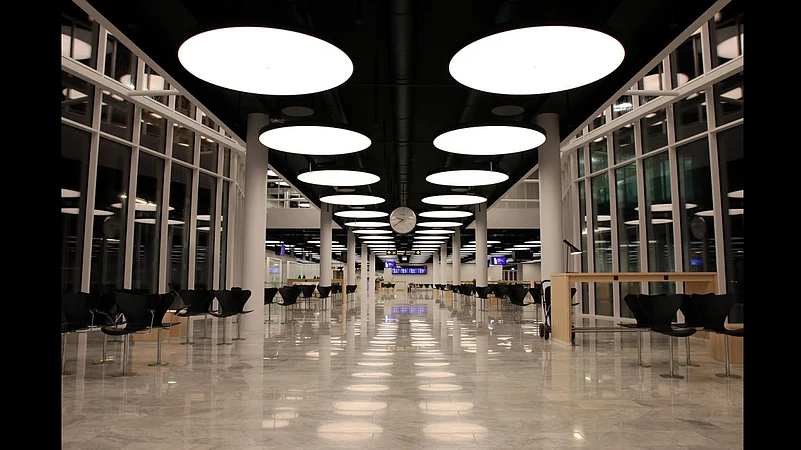I love airports. I especially admire the neat efficiency that they run with. Everyone is laced with a purpose: be it the flight crew, the travellers, or the shop assistants. There isn’t anyone loafing around here. Despite the culture of the land that they are placed in, airports across the world seem to follow the same format – luxury outlets line the pathways, which are equally well-punctuated with restaurants and cafes. Invariably, there’s a lonely bookshop around a less-frequented corner.
The clockwork precision with which these man-made mini cities run (except delayed flights, of course) serves as a reminder that when put to task, we can organise ourselves into a neatly run world. A badly run airport is more an exception than a rule.
After more than a year, I took a flight for the first time. I started with my favourite airport, Kastrup, in Copenhagen. It’s a small airport, yet it offers a range of options for everyone – from budget shopping to big brands. I prefer this airport primarily for the efficiency it runs with, and the cafes that serve excellent coffee and Danish pastries.
My eyes were keen to sense the changes that had occurred during the pandemic while I had stayed out of the airports. Clearly observable were the obvious ones first – protective glasses in front of the customer-facing counters, hand-sanitising stations, and everyone wearing masks while standing at a safe distance in the queues. What I sensed, in addition, was the hesitation that evidenced itself in people avoiding conversations, both while standing in the queue waiting for their coffee and in the flight where, despite sitting next to one another, there was a reluctance to make eye contact. The face masks didn’t help the cause, for it hid the expressions. One couldn’t tell whether the other person was smiling or frowning.
It felt like my favourite airport had lost its verve. Without the exchange of smiles and impromptu pointless conversations, the airport felt a transit hub - a joyless but much-needed stopover.
Doha airport wore a contrasting shade to Copenhagen. It’s massive, and, despite the size, seemed to be bursting at its seams with travellers. Here, the conversations flowed more easily, and smiles were easy to decipher when masks slipped off the faces often and with much willingness. A little more chaotic than its well-managed Danish counterpart, Doha airport seems almost back on its feet, both in terms of the number of travellers and also in regaining its pre-COVID vivacity.
While I waited at the airport for my connecting flight, hesitatingly removing my mask to sip coffee, I saw a neat file of travellers covered from head to toe, except the eyes, in white overalls, pass by. These were the unfortunate ones who had failed their RT-PCR tests and were earmarked for isolation. A fear arose in me, and I wondered if I was sitting too close to this faction in white. I left my coffee unfinished as I wrapped my face again and headed for safety. I realised that fear has become an unwelcome companion in these travels; I wished for it to not be this way for too long.

Finally, I landed at Delhi airport. It was after two years that I came to India and to this airport. I was full of expectations and eagerly looked forward to stepping out into the city that I grew up in. It was not to be so quick, so I was reminded, while lining up for yet another test at the airport. As I waited for the test results to come out, I saw two individuals dressed in white overalls being scouted to an isolation area. My mind raced to wonder whether they had been in the same flight that I had been in. I couldn’t be sure, for I could not make out their faces from behind the masks. Fear, a dreaded companion in this journey, showed up again. But little could I have done than to wait for it to subside.
There I was, close to midnight, eyes drooping, while I waited for my test results to come. These test results were the new visa, the entry ticket to normal life. While I waited, a thought crossed my mind – what if this new normal is here to stay? What if I will always travel with my face covered, and what if the commutes of the future become as bromide as this one? Would I still look forward to travelling? Would I still willingly explore new destinations, overcoming the anxiety and challenges of commuting to the destination?
In short, would I, post-pandemic, become less of a traveller than I have imagined myself to be thus far?
















